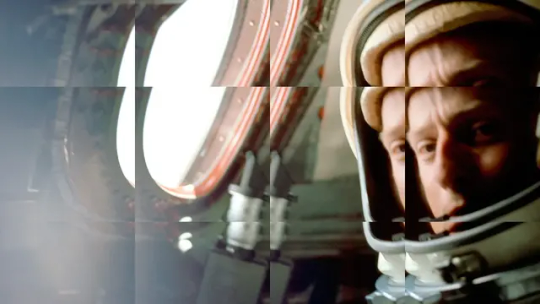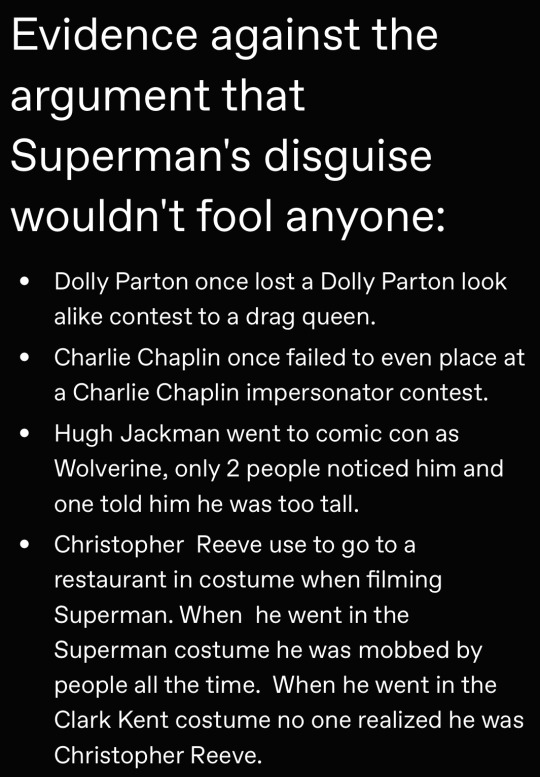#Atomic clock
Explore tagged Tumblr posts
Text

Caesium is the softest element that is solid at room temperature, with a hardness of 0.2 Mohs (for reference, the graphite in pencils is between 1-2 Mohs). The standard unit of time, the second, is defined by the electromagnetic oscillation of caesium-133 atoms.
19 notes
·
View notes
Text

I shot this Atomic Clock a couple of years ago at a photography workshop. I really like the warmth and feel of the shot and king of fitting for the holiday season.
5 notes
·
View notes
Text
QuantX Labs to Launch Optical Atomic Clock into Space

The QuantX Lab
QuantX Labs will launch an optical atomic clock.
Australian space technology is reaching a milestone as QuantX Labs, a global pioneer in quantum sensor and precise timing technologies, prepares to send its cutting-edge equipment into space. QuantX will integrate TEMPO, a key component of its atomic clock technology, onto the spacevan vehicle that will launch a SpaceX mission in December 2025 with Exotrail.
QuantX Labs will launch a key component of its next-generation optical atomic clock with a $3.7 million Australian Space Agency Moon to Mars award. This investment will strengthen sovereign capabilities and make Australia a leader in space-based accurate timing and navigation, demonstrating the Agency's focus, vision, and trust in the Australian space sector.
An optical frequency comb, a critical subsystem, provides synchronised Earth observations, navigation, deep-space communications, and exact position in addition to high-performance timing. Since its discovery around the turn of the century, optical combs have attracted attention and the 2005 Nobel Prize in Physics.
QuantX's demonstration will send the first optical frequency comb into orbit. Its comb has withstood rigorous environmental testing, including launch circumstances. This included space's extreme temperature swings, strong acceleration and vibration, vacuum exposure, and greater radiation levels than expected during the mission.
They use GPS and similar networks in their cars and phones everyday, and spatial time is useful. This first deployment of TEMPO's very precise timing technology aims to provide an Australian-only solution that replaces GPS and similar networks.
Professor Andre Luiten, Managing Director of QuantX Labs, said the launch was important: “This launch is the result of innumerable hours of labour by our engineers and physicists and a breakthrough for our TEMPO technology. We did this at a much cheaper cost and faster rate than usual. We are proud of our achievements and excited to see Australia dominate space-based precise timing.
A QuantX Labs team will visit France this month to collaborate with Exotrail to test and integrate the module on spacevan. These processes will be done at Exotrail's headquarters south of Paris before shipping the QuantX payload vehicle to the US launch site. Exotrail's second one-year in-space mission follows a successful demonstration trip in 2023 and continued client service in orbit.
Dr. Sebastian Ng, QuantX Labs PNT Program Lead, said, “The Frequency Comb launch is a critical milestone for the KAIROS mission, as the enabling technology for LEO optical clocks.” It will provide crucial data as we approach the clock payload if it launches. This technology enables next-generation location, navigation, and timing. To prepare for space missions, our team will create and integrate the full TEMPO system.
A successful Frequency Comb launch will be a milestone for QuantX Labs and Australia's growing space sector. As the KAIROS project approaches launch, its cooperation with Exotrail shows how worldwide collaborations generate cutting-edge technology. With TEMPO's track record and Exotrail's expertise in in-space mobility, this launch will establish Australia as a leader in space-based precise timing.
#technology#technews#govindhtech#news#technologynews#QuantX Labs#QuantX#TEMPO#optical atomic clock#atomic clock#SpaceX#spacevan#KAIROS mission
0 notes
Video
youtube
1:04 PM EST January 12, 2025:
Monster Magnet - "Atomic Clock" From the album Powertrip (June 16, 1998)
Last song scrobbled from iTunes at Last.fm
--

0 notes
Text
Contract for new Galileo atomic clock tech signed - Technology Org
New Post has been published on https://thedigitalinsider.com/contract-for-new-galileo-atomic-clock-tech-signed-technology-org/
Contract for new Galileo atomic clock tech signed - Technology Org
ESA has signed a €12 million contract with Leonardo S.p on behalf of the European Commission.A (Italy) and Istituto Nazionale di Ricerca Metrologica to design and develop a new ultra-precise atomic clock technology for Galileo.
Ultra-precise and reliable atomic clocks are essential in satellite navigation, driving overall system performance and positioning accuracy. A full technology innovation cycle can take up to a decade to complete, from the drawing board to being operational in space, so to keep Galileo at the forefront of global satnav, ESA is continually undertaking research and development for the evolution of both Galileo and EGNOS via the EU programme Horizon Europe.
Last month, ESA kicked off a new project to design, develop and qualify a new technology for atomic clocks. On behalf of the European Commission and after a formal selection process under open competition, ESA signed a contract for €12 million with a consortium formed by the Italian company Leonardo S.p.A as prime contractor and Istituto Nazionale di Ricerca Metrologica (INRiM) as subcontractor. As part of the R&D workplan for Galileo, ESA will also assess other clock technologies, the procurement of which is still ongoing.
“The pulsed optically pumped rubidium atomic clock under development combines the robustness of rubidium vapour cell atomic clocks, largely used in satellite navigation constellations like Galileo, with state-of-the-art optical and digital technologies,” explains Manuela Rapisarda, GNSS Evolutions Payload Principal Engineer at ESA.
Under this contract, the consortium will design, manufacture, test and qualify an engineering qualification model, after which an experimental flight model is expected to fly on a Galileo Second Generation satellite for early in-orbit verification. After initial tests, the new clock will still be monitored to study its reliability and long-term lifetime. Experimental clocks will fly in addition to the operational clocks used to provide Galileo services.
Galileo is one of the most crucial space-based infrastructures in Europe. “If qualified, the new clock technology will not only improve its performance but will guarantee Europe to stay at the forefront of atomic clock technology,” says Pascale Flagel, Head of Galileo and EGNOS Evolution Division.
Apart from investing in the development of new clock technology, Horizon Europe is also running research and development activities on other aspects for the evolution of EGNOS and Galileo, both in space and on the ground, to leverage emerging trends and address evolving user needs.
Mastering timekeeping in space
The capability of a satellite navigation system to pinpoint a location stems from calculating the time it takes for a signal to travel from the satellite to a receiver. Galileo satellites orbit 23 222 km above Earth, transmitting signals that incorporate a time stamp. Since the propagation speed of the signal is known, the difference between the transmission and reception time determines the distance of the user with respect to the satellite. It is possible to determine the user position on Earth knowing its distance from at least four satellites.
The signal transmitted by the satellite takes around a twelfth of a second to reach the user on Earth. Positioning accuracy is therefore linked to Galileo’s timing precision which needs to be within few nanoseconds – billionths of a second – in order to have a positioning accuracy of meters.
Currently, Galileo satellites of the first generation carry passive hydrogen masers, also developed by Leonardo and the most precise clocks in orbit to this date, and rubidium clocks, supplied by Safran. The new alternative atomic clock technology subject of the signed contract is expected to be even more precise than any of the current Galileo clocks, with a decrease in energy consumption and a mass reduction of more than 40% with respect to Galileo passive hydrogen maser clocks.
With the ultra-precise clocks currently flying on Galileo, the new pulsed optically pumped rubidium atomic clock and other innovative clock technologies now in early research stages, Galileo is in an excellent position to evolve and remain the best satellite navigation system in the world.
Source: European Space Agency
You can offer your link to a page which is relevant to the topic of this post.
#amp#Art#atomic#atomic clock#board#cell#Design#development#Difference Between#earth#energy#energy consumption#Engineer#engineering#ESA#eu#Europe#European Space Agency#Evolution#experimental#flight#Full#Fundamental physics news#Global#Horizon#horizon europe#hydrogen#Innovation#investing#it
0 notes
Text

Why you age slower on a plane?
According to the theory of relativity, the faster you travel, the slower time will pass for you. While the effect may be small, it is still significant. For instance, if you were to embark on a transatlantic flight from London to New York, the time displayed on your watch would be slightly behind that of a watch left on the ground by a ten-millionth of a second. This seemingly minuscule difference in timekeeping actually translates to you aging a fraction more slowly than if you had chosen to stay at home.
The Hafele-Keating experiment, conducted in 1971 by physicists Joseph C. Hafele and Richard E. Keating, stands as a seminal test of Einstein's theories of relativity. At the heart of the experiment were highly precise cesium atomic clocks, which served as the tools to investigate the effects of time dilation predicted by special and general relativity.
Cesium atomic clocks operate based on the vibrations of cesium atoms, which resonate at a specific frequency. The stability of these vibrations allows for incredibly accurate timekeeping. In the context of the experiment, the researchers strategically placed atomic clocks on commercial airliners that circumnavigated the globe in opposing directions.
Einstein's theory of special relativity, formulated in 1905, predicts that time is not absolute but rather relative to the observer's motion. Specifically, time dilation occurs when an object is in motion relative to an observer at rest. Clocks in motion appear to run more slowly, an effect proportional to the object's velocity. This concept was a fundamental departure from classical Newtonian physics, challenging the notion of a universal and absolute time.
The Hafele-Keating experiment tested these principles by sending atomic clocks on flights. Clocks traveling eastward, in the direction of the Earth's rotation, were expected to experience less elapsed time than stationary clocks due to their high speed. Conversely, clocks flying westward against the Earth's rotation were anticipated to register more elapsed time.
The results of the experiment were in line with the predictions of special relativity. Clocks that flew eastward recorded less time compared to their stationary counterparts, while clocks flying westward recorded more time. This experimental validation added significant weight to the revolutionary ideas introduced by Einstein in the early 20th century and demonstrated the practical implications of relativity on our understanding of time. The success of the Hafele-Keating experiment underscored the profound impact of Einstein's theories on our comprehension of space, time, and the nature of the universe.
#physics#experiments#cesium atomic clock#atomic clock#albert einstein#science#special relativity#theory of special relativity#time
0 notes
Text
You know, I think Mark was right when he said he had more than just a highschool crush on Eve cause remember, he completely freaked out and got this extra burst of strength out of nowhere that blew everything away when that alien leader held her at gunpoint back in season 1. And I don't think a little crush was motivating him that much. It was serious.
#also the fact that the leader immediately clocked#that eve was the one mark cared about most on the battlefield#because she was the ONLY one he cried out for#out of all the guardians getting fucked up#like he clocked their tea so bad#he literally made sure mark was watching when he grabbed her#he was like oh this is your girl okay hold on#he knew what was up lol#markeve#mark x eve#mark grayson#eve wilkins#atom eve#invincible season 3#invincible
119 notes
·
View notes
Text
A team of international researchers has developed an innovative approach to uncover the secrets of dark matter. In a collaboration between the University of Queensland, Australia, and Germany's metrology institute (Physikalisch-Technische Bundesanstalt, PTB), the team used data from atomic clocks and cavity-stabilized lasers located far apart in space and time to search for forms of dark matter that would have been invisible in previous searches. This technique will allow the researchers to detect signals from dark matter models that interact universally with all atoms, an achievement that has eluded traditional experiments.
Continue Reading.
92 notes
·
View notes
Text
whenever someone says “if they don’t have any masks, why doesn’t anyone recognize omni man? or eve? or kate?” THIS POST FLASH BANGS INTO MY MIND

#invincible#omni man#duplikate#atom eve#samantha eve wilkins#trust mark’s identity will be fine after the invincible war#his mask gets ripped so often anyways#wouldn’t be the first time#only thing i’d clock nolan grayson as is a dilf#need that#nolan grayson#viltrumeat
56 notes
·
View notes
Text
How does one tumblr 🤨 anyways whiteboard art but it's just me strugglin for 6 days






(ofc it's all characters no one cares bout + Selina)
#selina kyle#catwoman#Jewlee#punch#punch and Jewelee#golden glider#the top#lisa snart#roscoe dillon#marionette#mime#mime and marionette#ragdoll Jr#dc#dc comics#dc characters#catwoman comics#suicide squad#captain atom#flash rogues#central city rogues#doomsday clock#watchmen#secret six#whiteboard#art#digital art#Spotify
25 notes
·
View notes
Text


very very dramatic depiction of what it's like to loop back in ISAT
(source for time dilation)
#isat siffrin#in stars and time#my art#looping probably feels like being pulled and that made me think of black holes. which made me think of time dilation!#realistically time dilation can't be “felt” because the way you “feel” the passage of time near a black hole is the same as in empty space#but an atomic clock in empty space would tick faster than an atomic clock near a black hole. which is so mindfuck-y to me#I REALLY DO WANT TO MAKE MORE PHYSICS-RELATED ISAT STUFF. I LOVE BOTH THINGS
164 notes
·
View notes
Text

Measuring Time: Atomic Clocks
The most accurate clocks that exist today are atomic clocks, measuring the flow of time based on the resonant frequency of atoms and molecules. This is possible because electrons associated with atoms exist at distinct energy levels, and the transitions between these energy levels can be determined, leading to a consistent resonance when probed. While there are several types of atomic clocks, with different setups and configurations, they all rely on a single substance.
Cesium clocks are the most common, and it is the resonant frequency of cesium (also written caesium) that is used for the current definition of a second. Some atomic clocks also use rubidium, or hydrogen. Less common and more recent is strontium, as well as aluminum, yttrium, and mercury. Historically, ammonia was actually used in the first atomic clock in 1949 before the first cesium clock was built in 1955.
Sources/Further Reading: (Image source - Wikipedia) (Time and Date) (Popular Mechanics) (NASA) (NIST)
81 notes
·
View notes
Photo

5:13 AM EDT June 20, 2024:
Monster Magnet - "Atomic Clock" From the album Powertrip (June 16, 1998)
Last song scrobbled from iTunes at Last.fm
1 note
·
View note
Text
Scientists Observe Long-Predicted Superconductor Property Using a Quantum Simulator - Technology Org
New Post has been published on https://thedigitalinsider.com/scientists-observe-long-predicted-superconductor-property-using-a-quantum-simulator-technology-org/
Scientists Observe Long-Predicted Superconductor Property Using a Quantum Simulator - Technology Org
Superconductivity makes physics seem like magic. At cold temperatures, superconducting materials allow electricity to flow indefinitely while expelling outside magnetic fields, causing them to levitate above magnets. MRIs, maglev trains and high-energy particle accelerators use superconductivity, which also plays a crucial role in quantum computing, quantum sensors and quantum measurement science. Someday, superconducting electric grids might deliver power with unprecedented efficiency.
Researchers observed the new phases in superconductor interactions, which could help build more robust superconductors. Credit: JILA/Steven Burrows
Yet scientists lack full control over conventional superconductors. These solid materials often comprise multiple kinds of atoms in complicated structures that are difficult to manipulate in the lab. It’s even harder to study what happens when there’s a sudden change, such as a spike in temperature or pressure, that throws the superconductor out of equilibrium.
Quantum theory has predicted intriguing behaviors when a superconductor is driven out of equilibrium. But it has been challenging to perturb these materials in the lab without disrupting their delicate superconducting properties, leaving these predictions untested.
However, scientists can obtain surprisingly deep insights into superconductivity by studying it with fully controllable arrays of atoms in a gas. That is the approach of a research collaboration at JILA, a joint institute of the National Institute of Standards and Technology (NIST) and the University of Colorado Boulder.
In their latest work, JILA researchers caused a gas of strontium atoms to act like a superconductor. Even though the strontium atoms themselves are not superconducting, they follow the same rules of quantum physics. The researchers could make atoms in a gas interact in a way that preserves the sorts of interactions responsible for superconductivity while suppressing other competing, complex interactions. By throwing the atoms out of equilibrium, the researchers saw changes in atomic interactions that would affect the properties of actual superconductors.
With their strontium gas acting as a “quantum simulator,” the researchers were able to observe a behavior of superconductors that has been predicted to exist for years. This study, published in Nature, offers new insight into how superconductors work when appropriately driven out of equilibrium, and sheds light on how to make superconductors more robust, and how to use their unique properties in other quantum technologies.
‘How Robust Are These Things?’
In a normal material, electrons move in an incoherent way, bumping into one another constantly; normally, electrons repel each other. As they move, they collide, losing energy and generating heat; that’s why electric currents dissipate when electrons flow in a metallic wire. In a superconductor, however, electrons join up into weakly bonded pairs, called Cooper pairs. When these pairs form, they all tend to move coherently, and that is why they flow through the material with no resistance.
The physics is simple in some sense, explains theoretical physicist Ana Maria Rey, a NIST and JILA Fellow. Cooper pairs exist in a low-energy state because vibrations in the material’s crystalline structure pull the electrons together. When formed, Cooper pairs prefer to act coherently and lock together. The Cooper pairs are kind of like “arrows” that want to line up in the same direction. To unlock them or make one of the arrows point along a different direction, you need to add extra energy to break the Cooper pairs, Rey explains. The energy that you need to add to unlock them is called an energy gap. Stronger interactions between the atoms create a larger energy gap because the attraction that keeps the Cooper pairs locked is so strong. Overcoming that energy gap takes a lot of energy away from the Cooper pairs. So this energy gap acts as a buffer, letting the Cooper pairs remain happily locked in phase.
This all works when the system is in equilibrium. But when you introduce a sudden, rapid change, the superconductor falls out of equilibrium, or becomes “quenched.” For decades, scientists have wanted to know what happens to superconductivity following a quench that is abrupt but not so strong to completely break the Cooper pairs, said JILA physicist James Thompson.
“In other words, how robust are these things?” Thompson said.
Theorists predicted three different possibilities or phases that could happen when the superconductor is quenched. Think of it like a big group of square dancers, Thompson says. At first everyone is in sync, keeping to the beat of the music. Then some people get a little tired or some others start moving a little too fast, they crash into each other, and it turns into a mosh pit. That’s Phase I, when superconductivity collapses. In Phase II, the dancers get off the beat, but manage to stay in sync. Superconductivity survives the quench. Scientists have been able to observe and study these two phases.
But they have never seen a long-predicted third phase, in which the superconductivity of the system oscillates over time. In this phase, our dancers will move a bit faster or a bit slower at times, but no one crashes. That means sometimes it’s a weaker superconductor, and sometimes it’s a stronger superconductor. Until now, no one had been able to observe that third phase.
‘Everything Flows’
Working with Rey���s theory group, Thompson’s team at JILA laser-cooled and loaded strontium atoms into an optical cavity, a space with highly reflective mirrors at either end. Laser light bounces back and forth millions of times before some light leaks out at one end.
The light in the cavity mediated interactions between the atoms, causing them to align into a superposition state — meaning they are in both the excited and ground state at the same time — and to lock in phase, like Cooper pairs do, Rey explains.
Using lasers, scientists can quench the system, and by measuring the light that leaks out, they learn how the energy gap has changed over time. With this quantum superconductor simulation, they were able to observe all three dynamic phases for the first time.
They found that in the third phase the energy gap can keep superconductivity going even when the system is out of equilibrium. Using quantum simulators like this could help scientists engineer unconventional or more robust superconductors, and better understand the physics of superconductors in general.
It’s also a counterintuitive way for scientists who work in measurement science to see atomic interactions, like the ones that cause the energy gap, as a benefit, not a curse.
“In measurement science, interactions are usually bad. But here, when interactions are strong, they can help you. The gap protects the system — everything flows,” Rey says. “At the heart of this idea you could have something that oscillates forever.”
Having something that oscillates forever is a dream for quantum technology, Thompson adds, because it would let sensors work better for longer. Much like the superconductors, groups of atoms, photons and electrons in quantum sensors need stay in sync, or coherent, to work, and we don’t want them to turn into a quantum mosh pit or “dephase.”
“I am stoked that one of the dynamical phases that we observe can be used to protect quantum optical coherence against dephasing. For instance, this may one day allow an optical atomic clock to tick for longer,” Thompson said. “It represents a whole new way to increase the precision and sensitivity of quantum sensors, a topic that is at the frontier of quantum metrology, or measurement, science. We want to harness the many atoms and take advantage of the interactions to build a better sensor.”
Paper: Dylan J. Young, et al. Observing dynamical phases of BCS superconductors in a cavity QED simulator. Nature. Published online Jan. 24, 2024. DOI: 10.1038/s41586-023-06911-x
Source: NIST
You can offer your link to a page which is relevant to the topic of this post.
#2024#accelerators#approach#Arrays#atomic#atomic clock#atoms#Behavior#change#Collaboration#computing#crash#crystalline#direction#efficiency#electricity#electrons#energy#Engineer#Featured physics news#form#Full#Fundamental physics news#gap#gas#grids#heart#Heat#how#how to
0 notes
Text
pinned like a butterfly croaked like a toad


#i need a new art tag#equation posting#senskribbles#oc is not mine they belong to deep-space-atomic-clock
9 notes
·
View notes
Text

#mid century modern#Atomic Age#Post War Modern#MCM#JTEM#aesthetic#not my image#not my photo#Time#Clock
30 notes
·
View notes